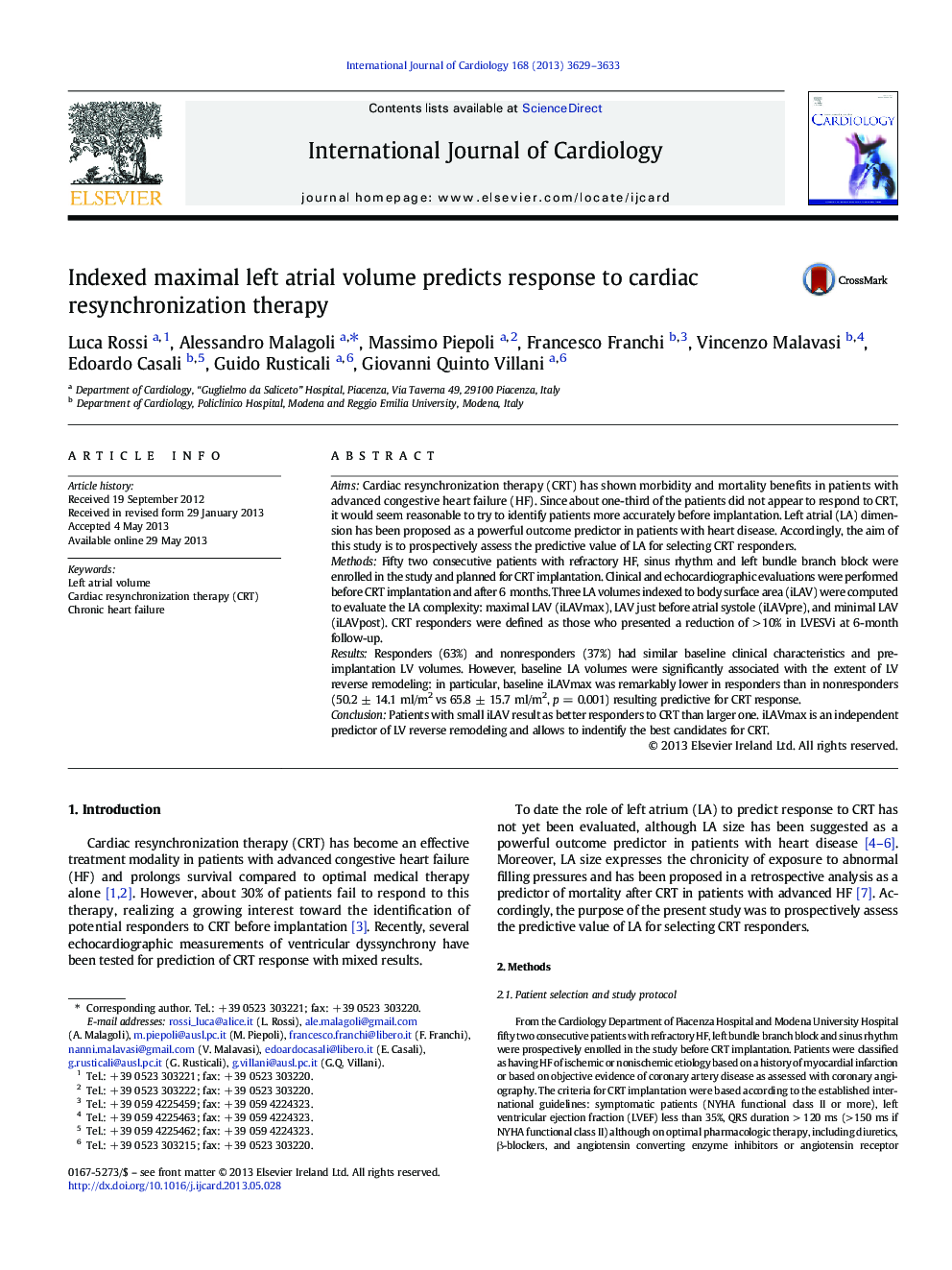| Article ID | Journal | Published Year | Pages | File Type |
|---|---|---|---|---|
| 5973801 | International Journal of Cardiology | 2013 | 5 Pages |
AimsCardiac resynchronization therapy (CRT) has shown morbidity and mortality benefits in patients with advanced congestive heart failure (HF). Since about one-third of the patients did not appear to respond to CRT, it would seem reasonable to try to identify patients more accurately before implantation. Left atrial (LA) dimension has been proposed as a powerful outcome predictor in patients with heart disease. Accordingly, the aim of this study is to prospectively assess the predictive value of LA for selecting CRT responders.MethodsFifty two consecutive patients with refractory HF, sinus rhythm and left bundle branch block were enrolled in the study and planned for CRT implantation. Clinical and echocardiographic evaluations were performed before CRT implantation and after 6 months. Three LA volumes indexed to body surface area (iLAV) were computed to evaluate the LA complexity: maximal LAV (iLAVmax), LAV just before atrial systole (iLAVpre), and minimal LAV (iLAVpost). CRT responders were defined as those who presented a reduction of > 10% in LVESVi at 6-month follow-up.ResultsResponders (63%) and nonresponders (37%) had similar baseline clinical characteristics and pre-implantation LV volumes. However, baseline LA volumes were significantly associated with the extent of LV reverse remodeling: in particular, baseline iLAVmax was remarkably lower in responders than in nonresponders (50.2 ± 14.1 ml/m2 vs 65.8 ± 15.7 ml/m2, p = 0.001) resulting predictive for CRT response.ConclusionPatients with small iLAV result as better responders to CRT than larger one. iLAVmax is an independent predictor of LV reverse remodeling and allows to indentify the best candidates for CRT.
